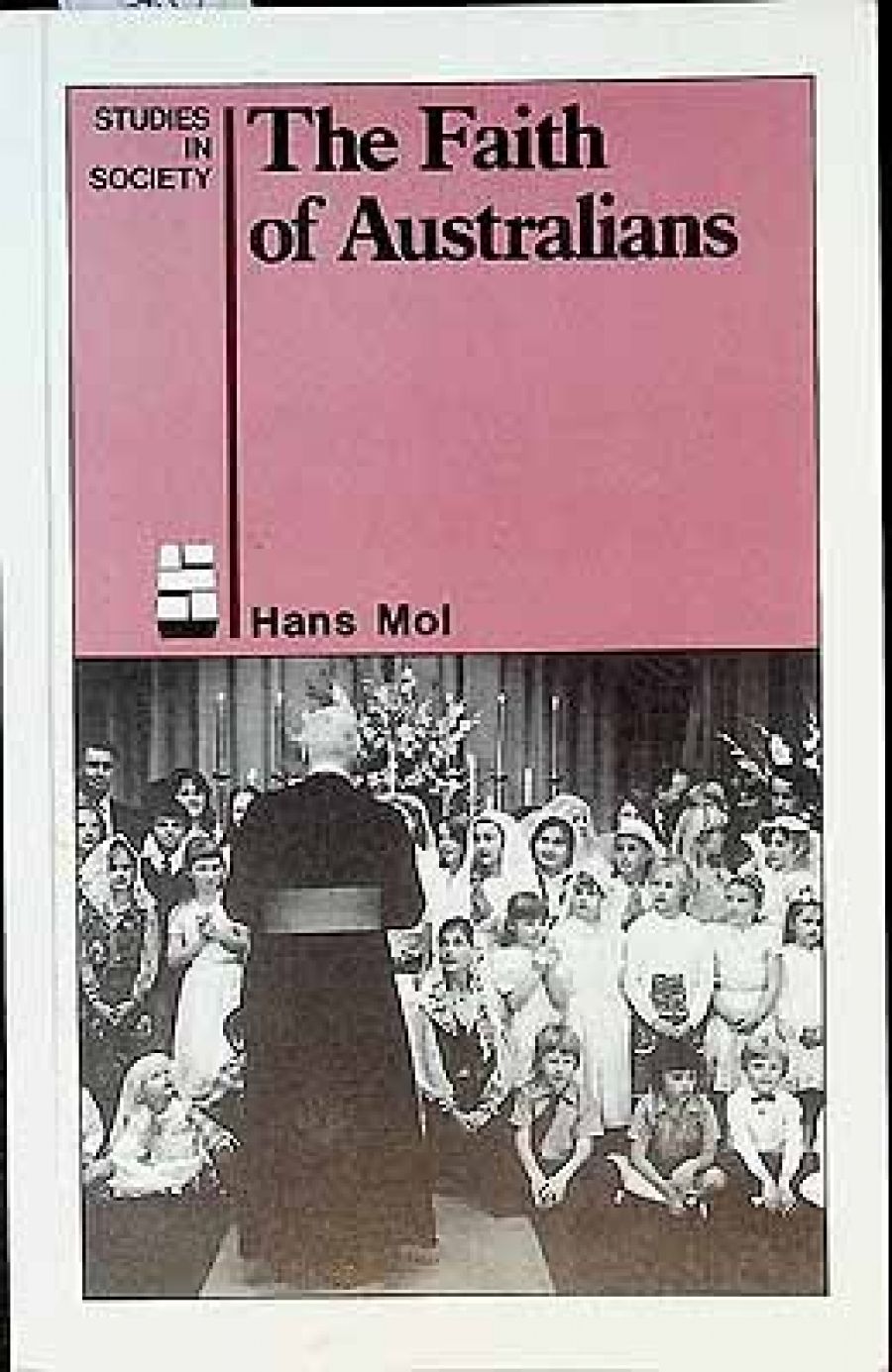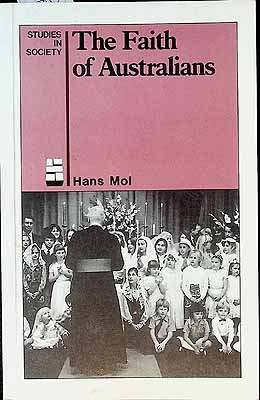
- Free Article: No
- Contents Category: Religion
- Review Article: Yes
- Article Title: On the Edge of Society
- Article Subtitle: Religion in Australia
- Online Only: No
- Custom Highlight Text:
Hans Mol, who, though of Dutch birth, has many ties with Australia, is professor of Sociology of Religion at McMaster University in Canada. His Religion in Australia being out of print, he has now produced a new book on the same subject. The opening passages inform us that religion is on the periphery of Australian society and that it is ethnically based.
The historic mainline churches, Anglican, Catholic, Presbyterian and Methodist, demonstrate both theses amply, while the post-war influx of adherents of Orthodoxy and Islam are further instances of the latter. The first chapter provides a detailed demographic study of religious adherence, followed by a discussion of the sects. This highly charged term is used in a -non-pejorative sense to indicate a ‘particular religious body [which] tends to stress its marginality and separateness in a particular society and tends to attract individuals who are marginal.
- Book 1 Title: The Faith of Australians
- Book 1 Biblio: George Allen & Unwin, 248pp., $24.95 $14.95pb
- Book 1 Cover Small (400 x 600):

- Book 1 Cover (800 x 1200):

The growth of sects is, Mol points out, a result of the current sense of alienation in society. Both Christian and non-Christian sects thrive on the feelings of insecurity generated by the pluralistic society which refrains from making value judgements to direct the individual's life. The sect can provide a haven for the emotionally needy, including mateship (where else is it found in Australia today?), moral guidance and meaning.
There is a detailed examination of the relations between the mainline churches and of the state of belief in their major doctrines. Much of this and other areas of the book use data gathered in 1966 for the earlier study. Churchgoing as it varies between the denominations and throughout Australian history is studies. These trends are compared with overseas experiences particularly in Britain and the United States.
Denominational schools, class and suburb of residence, and the role of the various denominations in politics are each accorded their chapter. The place of the Catholic-Protestant confrontation in relation to these was once central to the study of Australian society. Today it is recognised that the significant distinctions between schools, retention rates, HSC scores, entry into prestigious tertiary courses and the professions – runs on class, lines rather than on religion. Mol’s treatment of the issues reaches back into the nineteenth century and its social history. Its importance lies in the demonstration of the progressive lessening of religion as a class determinant.
Despite the recognition of the wide ethnic base of religion in Australia, the book has an ethno-centric bias. The inner circle of interest is Protestantism. Protestant sects and denominations and their amalgamations are examined in greater detail than are divisions in the Catholic Church. The outer circle of interest is largely limited to the world of Western Christendom. Comparisons between Catholics and Protestants with regard to attitudes and behaviours abound. The discussion of Jews, on the other hand, deals with them in the main as the objects of Christian prejudice. This is then a further study of Christian attitudes in an area of traditional concern, particularly since the Enlightenment. Similarly, the attitudes and behaviours of the Orthodox and Muslims with their religious structures and schisms, their part-time schools and growing numbers of full-time schools, are given little attention.
Myth and theology, though authentic repositories of the basic outlines of a culture … and therefore legitimate objects of research have not figured much in this book … the focus [is] on historical and survey data'. As the author has acknowledged this gap there is no need for a reviewer to labour the point.
While reading the book I often had the feeling that the case being made was that despite the decline in many areas of religion the faithful should not lose heart, the battle has not yet been lost. However, towards the end of the book I realised that an all-together bigger issue was being addressed. The book, through its data comparing people of various degrees of religiosity, is arguing that the believer is morally the better person. Indeed, it is making a case for religion.
This work is scholarly and well documented. The student of Australian society will find it an indispensable source of data and discussion of issues.


Comments powered by CComment